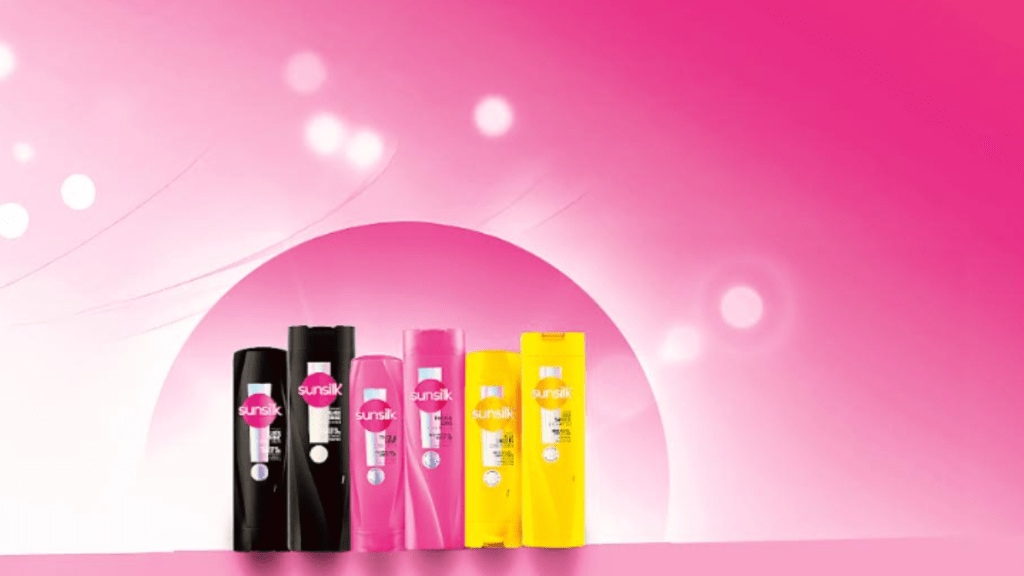Eight years is too long for HUL’s Sunsilk. The hair-care brand has rolled out a refreshed identity — after the last round in 2017 — complete with holographic packaging, bolder design elements, and a cultural campaign designed to resonate with younger consumers less than a decade after the last round of reinvigoration. The company is betting that a modern look, sharper storytelling, and social-first activations will help it stay miles ahead in a market that is being reshaped by naturals, premiumisation, and a wave of direct-to-consumer entrants.
Sunsilk’s new identity, with its rainbow tones and holographic finish, signals it is both science-backed and future-ready. On its website, the company described the move as more than a cosmetic shift, to “capture the rhythm of a new generation, one that values science, style, and self-expression”.
The broader market context
The timing is deliberate. India’s haircare market, valued around $3.6 billion in 2024, is projected to reach an estimated $6 billion by 2030, expanding at a CAGR of 8.8-11.65%, according to Stratefix Consulting. The core shampoo segment, however, has slowed, with growth of just 2.6-4.8% and urban penetration already above 90%. Volume headroom remains, but the categories seeing faster traction are conditioners, serums, and scalp treatments. Sunsilk, with its mass-market positioning, cannot afford to stand still.
The makeover also comes at a time when the category has begun to fragment along ingredient lines. Herbal shampoos are expanding at 8.4-9.6% CAGR, far outpacing conventional shampoos. Anti-hair loss, sulfate-free, and scalp-care formulations are gaining momentum, reflecting urban concerns about stress and pollution. “Sunsilk should focus on accessible naturals that bridge Ayurvedic wisdom with contemporary convenience,” says Chirag Patel, co-founder of Stratefix Consulting. He points to anti-hair loss and sulfate-free products as near-term opportunities, and personalised regimens as a medium-term play.
Industry watchers argue that D2C and niche brands have raised the bar by creating authentic, community-driven connections with young women. In any case, these days Gen Z and millennials seem to trust brands that feel like communities, where authenticity matters as much as clinical claims. Anchoring in science while building consumer connections will be key in this market, says Aayush Bansal, co-founder and director at BlackCab. Sunsilk must strengthen its connect with buyers through activations, two-way engagement, and mass customisation. Initiatives like partnering with creators can help reshape the narrative and make the brand part of Gen Z lifestyle.
The world of HUL
HUL doesn’t have much to worry though. Its haircare portfolio already commands more than 60% of the shampoo market through brands such as Clinic Plus and Dove. Sunsilk ranks third in HUL’s portfolio, with a market share of about 12-15%, Patel estimates. He estimates the brand generates annual revenues of `1,000-1,400 crore, representing 20-25% of HUL’s haircare sales and 6-8% of the company’s topline. While this scale gives it great market presence, HUL’s premium brands like Dove enjoy higher margins, and naturals-focused players are tugging at its market share. “The new visual identity ensures visibility on crowded shelves,” says BlackCab’s Bansal. “What will work in its favour is the latent nostalgia and heritage value the brand still holds.”
Distribution remains an HUL strength. Sunsilk rides on its parent’s deep network that spans over 9 million retail outlets and 3,500+ distributors. Sachets remain crucial for price-sensitive buyers, while online platforms are driving sales. Experts note that Sunsilk’s future strategy must combine rural sachet-driven growth with urban premium touchpoints and more personalised digital journeys.
“Long-term equity will depend on sustained cultural participation, consistent product performance, and building communities that celebrate young women’s self-expression,” concludes Ekta Dewan, head of marketing, Incuspaze.
